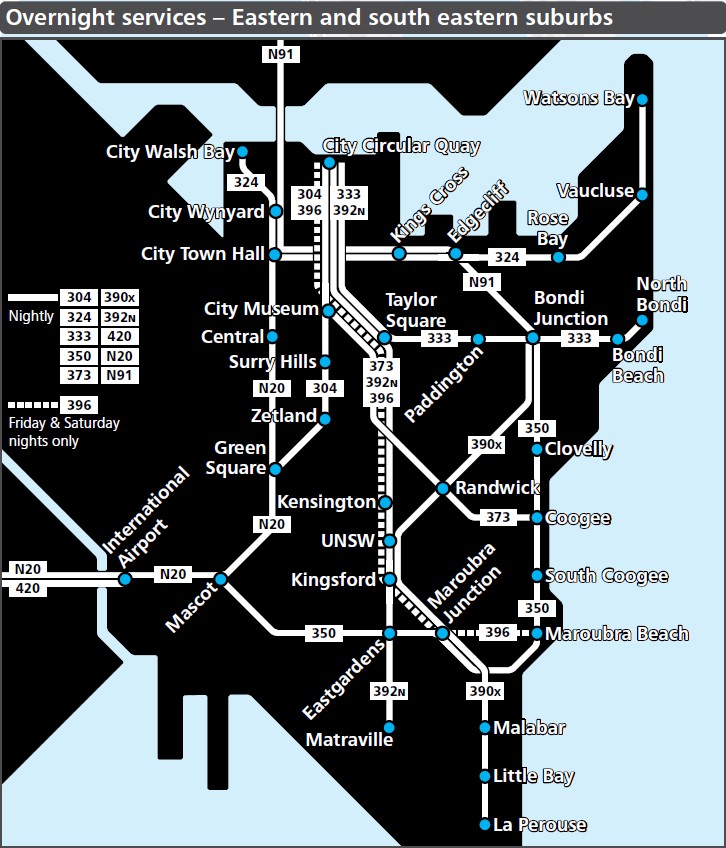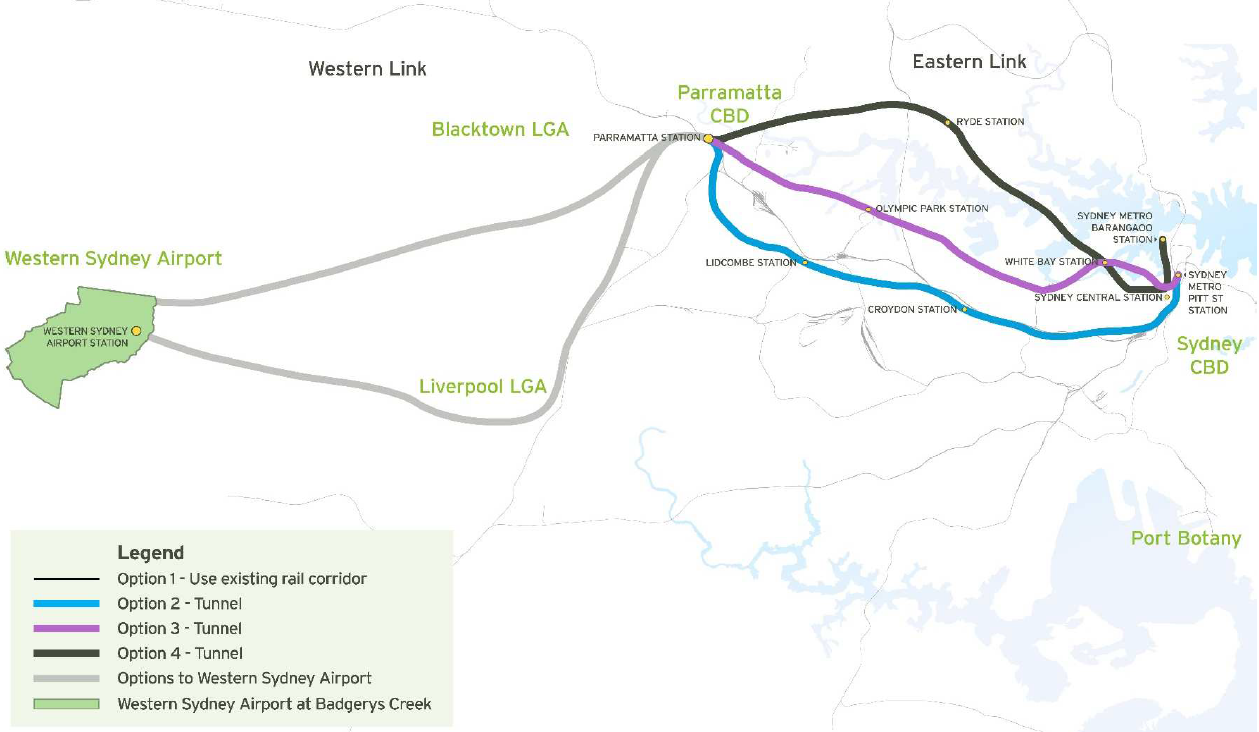Sydney traditionally had a radial public transport network. Trains and buses did and still do a pretty good job of carrying passengers from most parts of Sydney into and out of the CBD. The CBD also acts as an interchange point, allowing these passengers to transfer to another mode or vehicle before going on to a non-CBD location. What it hasn’t done well in the past is catering to circumferential journeys, one that may be a short distance but still requires passengers to make the much longer trip into the city and back.
For these sorts of journeys, a grid system works better. Given that Sydney’s transport system radiates outwards, this grid can be thought of like a spider’s web, with the rail network forming the lines radiating outwards (green) and frequent bus routes crisscrossing them (blue), other than where the Harbour acts as a natual barrier.

This style of network multiplies, rather than adds, the number of destinations available to a passenger, as it connects their initial mode of transport to a number of other routes or lines which they can transfer onto and reach their ultimate end point. A network based on transfers is often better than one designed around a single seat journey.
However, to work, this requires three things:
- Easy transfer points from one mode/vehicle to another. In most cases this would mean hopping off a bus right in front of a train station or vice versa without the need for a long walk.
- Minimal fare penalty when changing from one mode/vehicle to another. Transfer are an inconvenience (though one that can actually improve mobility in this case) which should not be seen as a premium service with a premium fare. The $2 Opal transfer discount has gone a long way to minimise this, but standardising fares from the ground up to either reflect the total distance travelled regardless of mode or adopting a zonal fare system would be even better.
- High frequency services with headways of no more than 5-10 minutes. Many lines and routes now enjoy 15 minute frequencies all day including weekends and evenings, but where a transfer is required this often isn’t frequent enough.
Transport for NSW has shown a willingness to move in this direction in recent years, particularly on the final point with their all day high frequency services. Most stations now have a train every 15 minutes and those with a train every 10 minutes have been on the rise. Bus network redesigns in the Eastern Suburbs, North Shore/Northern Beaches, and North West Sydney, have seen a greater focus on a grid-like network of high frequency buses which also act as feeder services to the rail lines that link the various parts of metropolitan Sydney. This is highlighted most clearly by the Eastern Suburbs overnight bus network, comprised primarily of the all day high frequency routes, illustrated below.

However, one part of Sydney that seems perfectly suited for this sort of network but has yet to receive this treatment is the Inner South West. An area roughly bound by the T4, T8, T3, and T1 lines which all broadly parallel each other East-West; from Olympic Park and Burwood in the North through to Hurstville and Rockdale in the South. Some bus routes running perpendicular to them North-South would easily achieve such a network if frequencies were sufficient. An example of what part of this might look like is shown below.

This example above involves 3 bus corridors that would run at 5-10 minute frequency all day (inlcuding evenings and weekends), crisscrossing the rail lines that would also run at similar frequencies:
- Hurstville to Beverly Hills and then Wiley Park. This might potentially make a detour via the Roselands Shopping Centre and could go via Lakemba instead of Wiley Park. It could then continue North along A3 to Sydney Olympic Park.
- Carlton to Kingsgrove and then to Belmore. It could then continue North to Belfield and finally Strathfield.
- Rockdale to Bexley North and then to Campsie. It could then continue North to Burwood and finally the future Burwood North station on Sydney Metro West.
Some of this frequency is already in place or about to be. The final corridor listed above is already covered by the 420 bus route that links Rockdale to Campsie via Bexley North and already runs every 10 minutes all day. Meanwhile, T3 is set to be converted to metro in 2024 and also run at 10 minute frequencies.
In the past, Transport for NSW has generally waited until major rail improvements come online before redesigning the bus networks around them. This happened in the North West following the opening of the North West portion of Sydney Metro and in the Eastern Suburbs following the opening of the L2/L3 lines of Sydney Light Rail. This may suggest that such a redesign could be on its way to the Inner South West in the coming years once Sydney Metro is extended out to Bankstown.










































